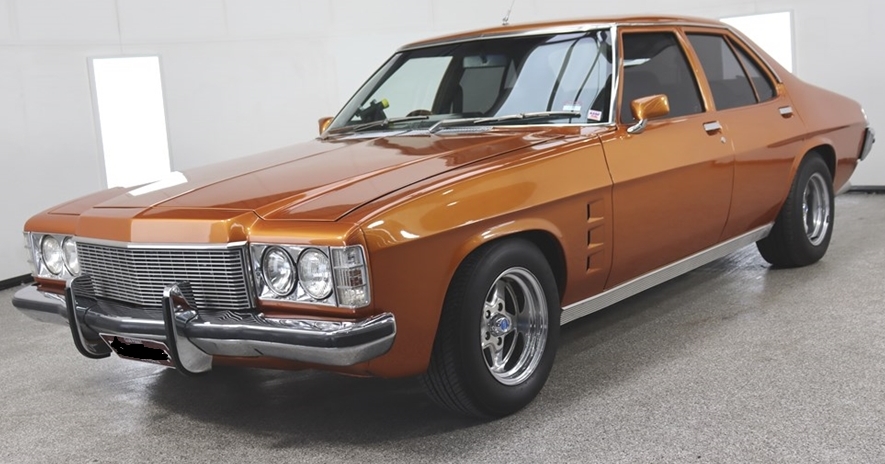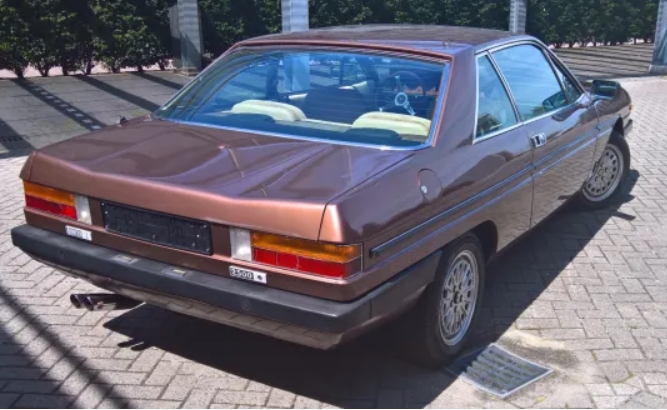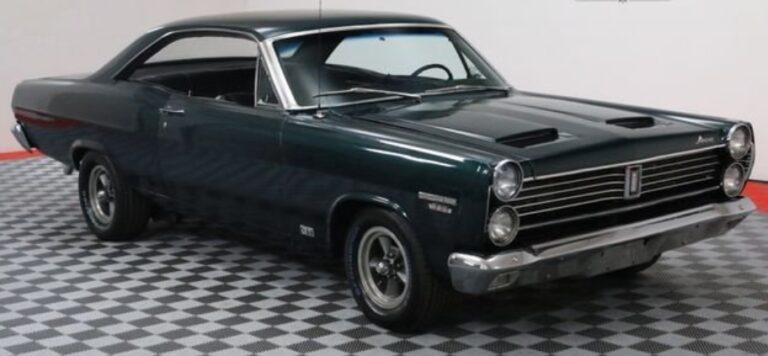The Necessary Evolution: Charting the Holden HJ HX HZ Journey
In the annals of Australian automotive history, few cars loom as large as the Holden HQ. Released in 1971, it was a revolutionary leap forward, a “beautiful beast” that redefined local design and engineering. Its success was monumental, casting a long shadow over everything that would follow. The challenge for General Motors-Holden was immense: how do you follow up an icon? The answer came not in one revolutionary step, but in a crucial, decade-defining evolution spanning three distinct models: the HJ, HX, and HZ. This series, produced from 1974 to 1980, represents the story of Holden adapting to a changing world of new aesthetics, stringent regulations, and a demand for greater dynamic sophistication.
The HJ (1974–1976): The Difficult Second Album
Years Produced: October 1974 – July 1976
Following the HQ’s sweeping, subtle curves and clean lines was never going to be easy. With the HJ series, Holden opted for a facelift rather than a ground-up redesign. The mission was to modernize the styling, bringing it in line with the more angular, formal design language emerging from American GM products in the mid-1970s.
The most dramatic change was at the front. The HQ’s delicate grille and bumper assembly was replaced by a bold, imposing, squared-off fascia. A prominent grille with a strong horizontal theme dominated, flanked by new wrap-around indicator lights. At the rear, new taillight clusters and a restyled boot panel completed the visual update. While contemporary critics felt it lost some of the HQ’s understated elegance, the HJ projected a more assertive and substantial presence on the road.
Inside, the focus was on improved comfort and clarity. A new dashboard fascia grouped the instruments more logically, and trim materials were updated across the range. However, mechanically, the HJ was largely a carry-over from its predecessor. The proven ‘Red’ motor six-cylinder engines in 2.8-litre (173ci) and 3.3-litre (202ci) capacities remained, as did the beloved 4.2-litre (253ci) and 5.0-litre (308ci) V8s. These were paired with the familiar three-speed column-shift manual, four-speed floor-shift manual, and the ubiquitous three-speed Trimatic automatic transmission. The suspension, steering, and braking systems remained unchanged from the late-model HQ.
The true strength of the HJ lay in its comprehensive and diverse model range, catering to every corner of the Australian market.
Holden HJ Models and Trim Levels:
- Belmont (Sedan, Wagon, Utility, Panel Van): The workhorse of the range. The Belmont was the entry-level, no-frills option favored by fleet buyers, tradesmen, and budget-conscious families. It featured basic vinyl trim, rubber floor mats, and minimal exterior chrome. It served its purpose as durable, reliable transport.
- Kingswood (Sedan, Wagon, Utility): The quintessential Australian family car. The Kingswood was the volume seller and the heart of the range. It offered a significant step up from the Belmont, including full carpeting, more comfortable bench or bucket seats with nicer trim, armrests, and additional chrome moldings on the exterior to distinguish it. The Kingswood was the benchmark against which rivals from Ford and Chrysler were measured.
- Premier (Sedan, Wagon): The touch of affordable luxury. The Premier was aimed at the executive and the discerning family buyer. Its most distinctive feature was its quad-headlight front end, shared with the Statesman models. Inside, the Premier boasted plush velour or vinyl upholstery, extensive woodgrain trim on the dash and doors, a center console for bucket-seat models, and a host of standard features like a push-button radio and additional courtesy lights.
- Monaro LS (Coupe): The ‘Luxury Sport’ model. The HJ saw the Monaro line pivot slightly. The LS (based on the Premier) was a personal luxury coupe, featuring the Premier’s quad-headlight front end, plush interior appointments, and a standard 3.3-litre six-cylinder engine, with the V8s optional.
- Monaro GTS (Coupe, Sedan): The performance icon. The GTS continued its reign as Holden’s muscle car hero. Available for the first time as both a two-door coupe and a four-door sedan, the GTS featured a unique grille, bold ‘GTS’ graphics, three-piece taillights, and steel sports wheels. A 4.2-litre V8 and four-speed manual were standard, with the potent 5.0-litre V8 being the ultimate option.
- Commercials (Ute, Panel Van, One-Tonner): Beyond the Belmont and Kingswood Utes, the Panel Van became a cultural phenomenon in the HJ era. Holden capitalised on this by offering the legendary Sandman option pack. Available on the ute and panel van, the Sandman package included the GTS’s vented front guards, sports instrumentation, bucket seats, and the iconic, vibrant Sandman-specific decals, turning a humble commercial vehicle into a highly desirable lifestyle machine.
- Statesman De Ville & Statesman Caprice (Long-wheelbase Sedans): Although marketed as a separate marque, the Statesman models were built on the same stretched platform. The De Ville was the mainstream luxury offering, while the Caprice was the pinnacle, boasting leather upholstery, power windows, air conditioning, and every conceivable luxury Holden could offer.
.
THIS is GOOD stuff if your car is in need:

.
The HX (1976–1977): The Regulatory Response
Years Produced: July 1976 – October 1977
The Holden HX series represented a pivotal moment, not of design innovation, but of regulatory compliance. Its existence was dictated almost entirely by the introduction of Australian Design Rule (ADR) 27A, a stringent new set of emissions controls designed to reduce air pollution.
Visually, the HX was almost indistinguishable from the HJ. Minor changes included updated badging and a slightly revised grille pattern. Inside, the changes were equally subtle. The real story was under the bonnet. To meet ADR 27A, Holden engineers had to significantly de-tune their entire engine lineup. Compression ratios were lowered, and new carburetors and exhaust gas recirculation systems were fitted.
The result was a noticeable and widely lamented decrease in performance and driveability. Power outputs dropped across the board, and worse, fuel economy often suffered as the engines struggled to breathe. The once-mighty 5.0-litre V8, for example, felt lethargic compared to its HJ predecessor. The HX became known as the compromised model—a necessary evil to satisfy government regulations, but a step backward for the driving enthusiast.
The model lineup largely mirrored the HJ, with one notable and spectacular exception. As sales of large coupes dwindled, Holden decided to send off the Monaro coupe body style in style with the Limited Edition LE, released in September 1976. Based on the Monaro GTS sedan, but using the coupe body, the LE was a striking machine painted in an exclusive metallic red. It featured gold-painted Pontiac-style honeycomb wheels and a luxurious interior based on the Statesman Caprice. All LEs were fitted with the 5.0-litre V8 and Turbo-Hydramatic automatic transmission. Only 580 were ever built, making it a highly-prized collector’s item today.
The HZ (1977–1980): The Handling Revolution
Years Produced: October 1977 – April 1980
If the HX was a step back, the HZ was a revolutionary leap forward. While the body was still fundamentally the same 1971 HQ shell, Holden’s engineers, led by Peter Hanenberger, unveiled a groundbreaking innovation that would forever change the brand’s reputation: Radial Tuned Suspension (RTS).
For years, large Australian cars were criticized for their soft, boat-like handling, characterised by heavy understeer and a disconnected feel from the road. RTS systematically addressed these flaws. The entire suspension geometry was revised, front and rear anti-sway bars were added or thickened, shock absorber settings were recalibrated, and crucially, steel-belted radial tyres became standard.
The effect was utterly transformative. The HZ was a revelation to drive. It turned into corners with an eagerness previously unknown in a full-size Holden. It was stable, predictable, and gave the driver immense confidence. The wallowing ride was replaced with a firm yet compliant composure that rivalled far more expensive European sedans. Holden’s marketing heavily promoted the RTS breakthrough, famously claiming, “a great car has been made even better.” For once, the marketing slogan was an understatement.
Visually, the HZ received its own set of updates. A cleaner, more modern egg-crate style grille was fitted to the mainstream models, while a new dash with clearer, round dials was installed inside. Sedans featured a slightly raised boot lid to improve luggage space.
The model range was also significantly rationalized:
- The Belmont name was retired from passenger cars, now used only for commercial vehicles. The Kingswood became the new entry-level sedan and wagon.
- A new Kingswood SL model was introduced, filling the gap between the base Kingswood and the Premier with added comfort and trim features.
- The Premier continued as the luxury stalwart.
- The Monaro name was officially laid to rest. The performance model was now simply the Holden GTS sedan, identifiable by its body-colored grille and bumpers. It was a sophisticated sports sedan, a fitting beneficiary of the new RTS handling.
- The Sandman ute and panel van continued their reign of cool, now benefitting enormously from the improved RTS dynamics.
- The long-wheelbase Statesman De Ville and Caprice also received the full RTS treatment, elevating them into true world-class luxury tourers.
Legacy of an Evolution
The Holden HJ-HZ series bridged a critical era for the Australian car industry. It began with the HJ, a confident but conservative update to a legendary car. It weathered the storm of regulation with the compromised but necessary HX. It culminated in the HZ, a triumph of engineering that finally gave the platform the dynamic ability its handsome looks had always deserved.
This evolutionary path saw Holden transform its flagship product from a stylish but simple machine into a sophisticated, world-class vehicle. The HZ, in particular, set a new benchmark for handling in an Australian family car, a legacy that would directly influence the design of its successor, the smaller, European-inspired Commodore. The HJ-HZ series was the final and most refined chapter for the traditional, full-size Holden, a lineage of workhorses, family wagons, and V8 icons that defined Australian roads for a generation.







